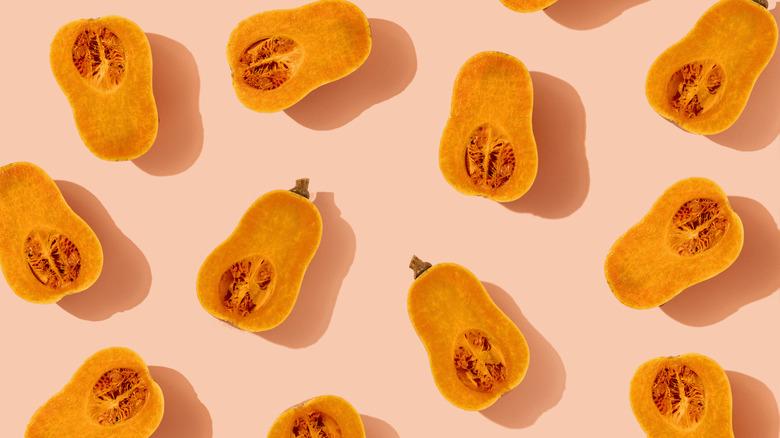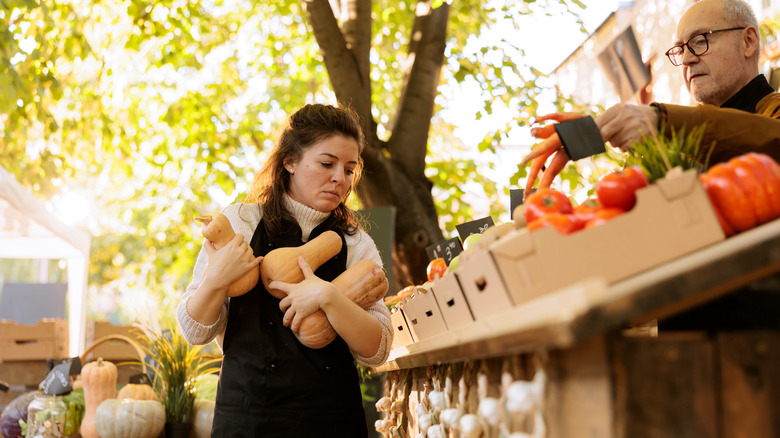How To Tell If Your Butternut Squash Is Ripe
The deep, orange center of a butternut squash is the star of smoky roasted side dishes, smooth soups, creamy curries and rich, nutty pasta sauces during the colder months. Butternut squash possesses a sweet flavor that's often likened to that of another fall favorite, the sweet potato. Butternut squash bears few seeds and as such is a versatile option for hearty, cool-weather classics.
The butternut squash nestled between piles of pumpkins and parsnips at the farmers market probably has a yellowy, beige skin. Before they mature and are plucked from the vine, the bulbous gourds actually sport a green hue. As the fruit ripens, its verdant coat gives way to a warmer shade. An unripe butternut squash lacks its signature sweetness and will taste bland and starchy. To select a squash that will shine in casseroles and other comfort dishes, test its skin, check its stem, and gauge its weight.
How to pick a perfect butternut squash
Like many of its winter squash cousins, butternut squash changes color as it grows. If you need to buy a dinner-ready butternut squash, start by inspecting its skin. You shouldn't see any green still lingering on the squash's exterior. A ripe squash is solid beige. Any remaining streaks mean that it's not quite ripe. The skin should also be free of brown spots or blemishes.
A butternut squash's stem also darkens as it ages. As it ripens, it will go from a spring green to a deep brown. Sometimes, the stem will burst out when a squash is overripe, so one that's still wearing its wstem is ideal. The thick stem should feel dense and firm to the touch.
While bright, glossy produce might sound pretty, a good butternut squash has a matte exterior. A shiny appearance means it was picked prematurely. A ripe squash should also have a hard husk. To test the skin, try piercing its surface with your thumbnail — it shouldn't be easy to prick. Pick up a few squashes to get a sense of the right weight. A squash that's lighter than its peers isn't ready, while a heavier one is ripe and ready to eat.

